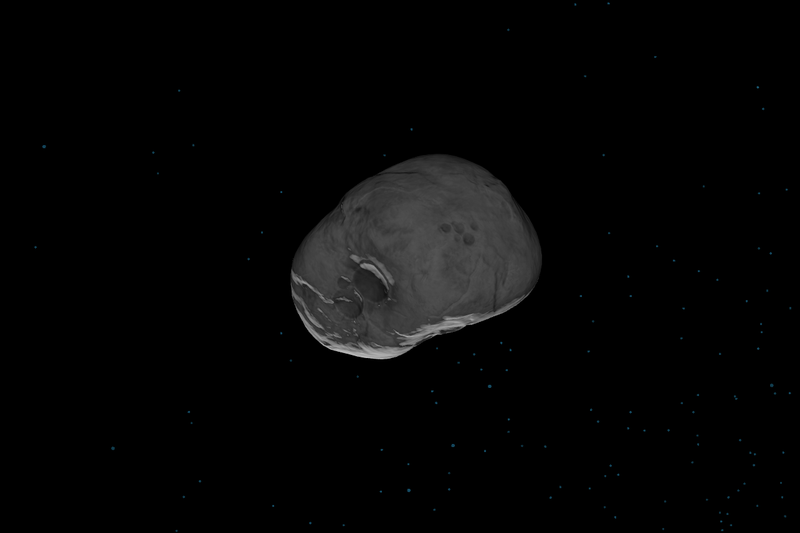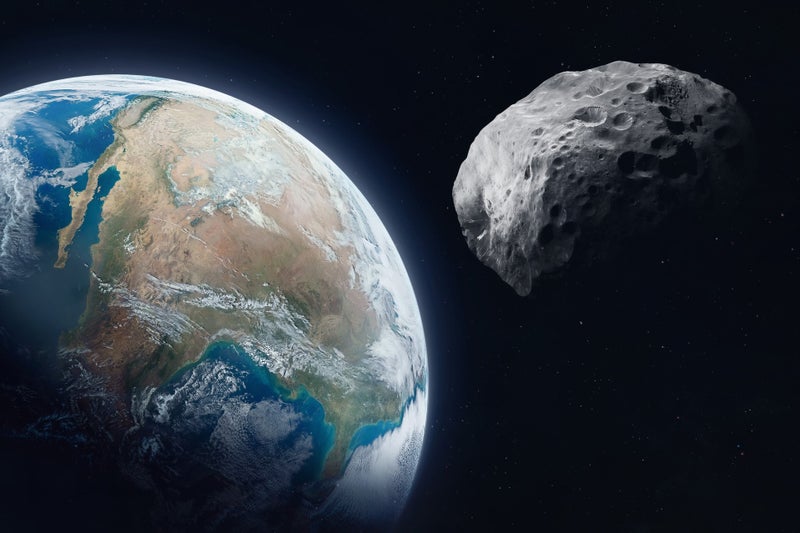The action films almost always start the same. A lone astronomer peaks through the observatory telescope and sees it – an asteroid. Panic ensues. The government fumbles. But, almost always, the Earth-dwellers find a way to avoid catastrophe. While its discovery involved more than one fumbling astronomer, the asteroid 2024 Y24 has been in the headlines for its high chance of impact.
![[The largest asteroid event in human history]](https://metro.co.uk/wp-content/uploads/2025/02/SEI_240753309-1e32.jpg?quality=90&strip=all&w=646)
Last week, space officials said it had a 3.1% smashing into the Earth on December 22, 2032, the most likely sizeable space rock ever forecast to hit us. Nasa revised these odds on Thursday to only 0.28% before going down to 0.27% then marginally up to 0.36% today, for a one in 280 chance.
![[The largest asteroid event in human history]](https://metro.co.uk/wp-content/uploads/2025/02/SEI_240753308-bc68.jpg?quality=90&strip=all&w=646)
Leaving, of course, a solid 99.64% chance the asteroid will miss the Earth. But it hasn’t always played out this way. While we all know the time an asteroid wiped out the dinosaurs, it was only a century ago that we saw the largest space-related explosion in human history.
![[The largest asteroid event in human history]](https://metro.co.uk/wp-content/uploads/2025/02/SEI_240753415-0c6c.jpg?quality=90&strip=all&w=646)
The Tunguska Event occurred on June 30, 1908, in a largely uninhabited forest along the Podkamennaya Tunguska river in Siberia, Russia. Locals craned their necks that warm morning to see a bluish fireball, so bright it rivalled the Sun, soaring through the sky.
![[This image made available by University of Hawaii's asteroid impact alert system, shows an arrow where asteroid 2024 YR4 would be, Dec. 27, 2024. (ATLAS / University of Hawaii / NASA via AP)]](https://metro.co.uk/wp-content/uploads/2025/02/SEI_239807586-ccbd.jpg?quality=90&strip=all&w=646)
Locals said they saw a bright light at 7am before hearing a sound akin to gunfire. Suddenly, their windows shattered and they were knocked to the ground. ‘After that such noise came, as if rocks were falling or cannons were firing, the Earth shook, and when I was on the ground, I pressed my head down, fearing rocks would smash it,’ one local, S Semenov, later told researchers.
‘When the sky opened up, hot wind raced between the houses, like from cannons, which left traces in the ground like pathways, and it damaged some crops.’. The impact seared the Siberian forest, flattened 80 million trees and killed countless reindeer over an area of 830 square miles, larger than London.
‘The sky split in two and fire appeared high and wide over the forest. The split in the sky grew larger, and the entire northern side was covered with fire,’ said an eyewitness at the Vanavara trading post 40 miles away. For days, the sky above – and as far away as the UK – had an eerie glow.
The site is about 1,200 miles northeast of Chelyabinsk, the Siberian city with a population of only a few hundred thousand at the time. No one – scientists included – had any idea what happened. Was it an alien spacecraft? A secret government mission? A black hole? Or a particle of antimatter, the evil twin of matter that obliterates one another?.
The answer would evade the public for decades, with the first time scientists accessed the crash site in 1927 coming up with more questions than answers. Leonid Kulik, a Russian mineralogist, led the Soviet research mission and, after speaking to locals, realised an asteroid was to blame.
Or to be exact, an up to 250-foot stony asteroid travelling at a speed of about 33,500 miles, as experts realised over the following decades. Most people think of an asteroid impact as one that leaves behind a crater. The Tunguska Event, however, didn’t.
Instead, scientists believe the rock exploded once it crashed through the Earth’s atmosphere. High-pressure air seeps into its cracks, breaking it apart, in what scientists call a meteor air blast. To view this video please enable JavaScript, and consider upgrading to a web browser that supports HTML5 video.
Up Next. The asteroid was hurtling in a northwesterly direction when it self-destructed at the altitude of a passenger plane, between three and six miles high. This air blast isn’t like one fired from an air vortex cannon toy, though. Rather, the explosion was as powerful as four megatons of TNT or a medium-sized hydrogen bomb.
Some calculations say the explosion was 185 to 1,000 times more powerful than the atomic bomb that razed Hiroshima. Despite this, no fires were reported from the blast. The energy unpleased by the impact lit the woods alight but the following air blast extinguished it.
While rock being an asteroid – a metallic rock that orbits the Sun – is the prevailing theory, some scientists suggest it was a comet, dirty snowballs thrown from the outskirts of our star system. How the sky glowed after the impact could prove it was a comet. Water from the frigid object likely created noctilucent, or night-shining, clouds made out of glistening wisps of icy crystals.
Though, some scientists say that the object, whatever it was, never even hit the planet. Instead, it just grazed us, which is why it left next to no remnants. A Tunguska-type event is only expected to occur on average once every century, but the incident some 107 years ago encouraged scientists to take planetary defence more seriously.
Missions in recent years have seen space officials launch a spacecraft into an asteroid to nudge it enough to change its orbit, a tactic Earth could do if an asteroid to make a direct hit. Right now, we know too little about 2024 YR4 to know if it will strike the Earth and, on the unlikely chance it does, what damage it could cause.































